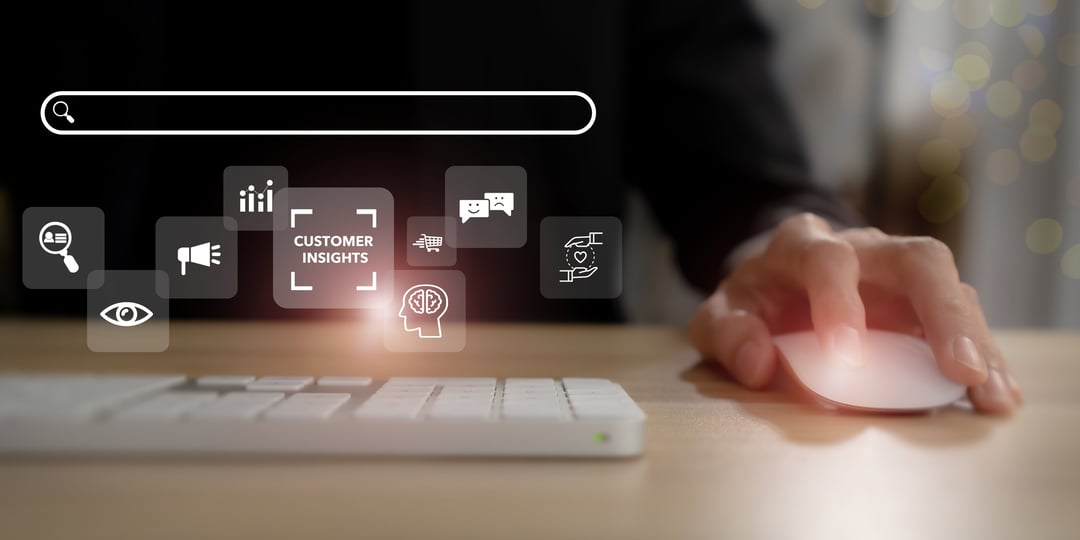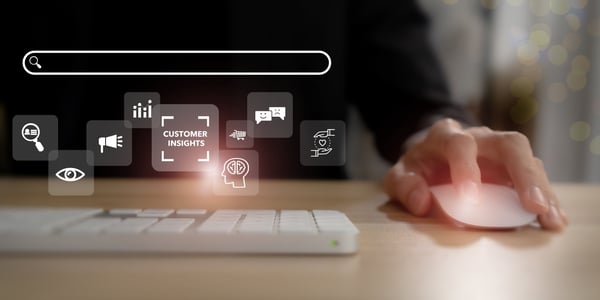- Blog Overview
- Knowledge
- Five Ways to Use Customer Journey Data to Boost Sales

Five Ways to Use Customer Journey Data to Boost Sales
The Qmatic Team |February 15 2023 | 11 min
Winning the battle for more foot traffic starts with delivering frictionless omnichannel retail experiences. Fail to deliver on customer expectations, and you can pay the price with your bottom line. That’s because 80% of customers that have more than one bad experience say they would rather do business with a competitor.
But it's not enough to simply have an online website and offer mobile capabilities to your customers. To be impactful, each channel must work together in unison, reinforcing your brand presence while delivering a seamless and consistent experience, whether that’s online or onsite.
So how can executive retailers like yourself ensure you deliver on consumer expectations for a frictionless experience across all your channels? The key to crafting impactful omnichannel experiences starts with customer journey data. And here’s why.
Customer journey Data: The lynchpin of all your omnichannel customer experience programs
The customer journey today is more fragmented than ever before. Customers have more options and channels at their fingertips, empowering them to choose how and where they want to shop — especially when you consider the pandemic's impact in ushering in new ways of shopping, such as click-to-pay and curbside pickup.
It's not surprising, therefore, that the fastest-growing channels between 2019 and 2021 were brand websites and apps, retailer websites and apps, and online marketplaces. This growth doesn't even account for the confluence of emerging channels, like delivery apps and social media messaging platforms, which also grew by 20% during the same period.
As a result of these technological advancements, customers want and expect retailers to meet them where they are. That means that you must now provide experiences that are not just timely and targeted but also personalized to that specific customer’s motivations and behavior.
To accomplish this, you need to have customer data that enable you to gain insights into these micro-moments to understand how to best address customer needs. And the best part? You already have a large swath of customer data at your disposal that can be used to craft winning experiences that both meet customer expectations and drive bottom-line growth.
According to McKinsey, companies adept at effectively organizing and managing the customer experience can "realize a 20% improvement in customer satisfaction, a 15% increase in sales conversions, and 20% in employee engagement."
Not only that, but more and more customers prefer to shop through multiple channels — about 73%, according to the Harvard Business Review. Therefore, delivering omnichannel experiences will become less about obtaining differentiation and more of a necessity to survive and thrive in today's digital age.
If you need more convincing, consider these stats. Omnichannel shoppers have a 30% higher lifetime value than those who just use one channel. They also spend 10% more online and 4% onsite than their single-channel counterparts. Finally, the purchase frequency is 250% higher with omnichannel than with a single channel.
Knowing that you have a vast amount of data at your disposal, you're probably wondering how you can leverage these insights to drive better omnichannel experiences — particularly when a customer decides to enter your store. Well, you're in luck.
How to use customer journey data to win more foot traffic
When it comes to bridging the digital and physical experience, you must let go of any preconceived assumptions of what customers want and dig into their journey data. It also requires you to reimagine the role of your brick-and-mortar to maintain the consistent delivery of your brand experience.
Rather than focusing on sustaining operations, as usual, you should seek to deliver in-store experiences that simply can't be replicated online. And with 81% of younger consumers preferring to shop onsite to discover new products, leveraging this strategy will be vital in generating repeat and loyal customers.
This is where leveraging customer journey data will be key. But exactly how can you use customer journey to drive more sales by way of an effective omnichannel experience? Here are five ways how:
1. Control customer flow
Let's face it. Large crowds and long lines are major turnoffs regardless of where you fit in the generational spectrum. And in the post-COVID world, many consumers still expect you to abide by CDC guidelines. One way to leverage customer journey data is to understand daily patterns such as visitor volume per day, average transaction size, actual and estimated wait times, and bottlenecks in your processes. All this information can be used to better manage foot traffic by way of appointment scheduling tools and queue management solutions that enable you to better manage customer flow while delivering exceptional in-store experiences.
2. Deliver tailored customer service experiences
Seek to consolidate your customer journey data in one platform, like a customer journey management solution that gives your employees pertinent customer data at their fingertips. By knowing who's coming into the store, especially if they have an appointment with staff members, employees can prepare in advance to deliver superior customer service. For example, a team member may know that a customer is coming in and wants to speak to a representative about styling a wedding dress for an event. While the employee waits to greet the customer, they can look at the inventory and select a few pieces based on the customer's preference to suggest once they come in.
3. Reduce wait times
No one likes to wait in line. Customer journey data gives insights into average wait times and service delivery that you can use to benchmark employee performance to optimize wait times. For example, after reviewing wait times at checkout, you may look into queue management technology and digital signage to better manage customer expectations. You can even leverage virtual queuing solutions that enable customers to wait how they want versus waiting in line. More on this topic here.
4. Identify upsell/cross-sell opportunities
From online behavior to expectations onsite, you likely have this data readily accessible. But rather than let it sit in a system, you can look into the data to identify upsell/cross-sell opportunities. For example, a customer comes into the store to buy shoes for a sporting event. If you're also running a sale for sporting clothes and equipment, you can use this information and communicate it to your customer before or after they arrive via messaging services.
5. Orchestrate better experiences
If you're collecting both direct customer feedback via survey and indirect feedback, such as actions taken online and onsite, you can use this information to craft better experiences. And as we mentioned above, experiences that deliver on customer expectations generally lead to higher revenue. Through the feedback garnered, you may find ways to create more immersive experiences by leveraging solutions like self-service kiosks and more.
Now is the time for omnichannel
The opportunity cost of not being omnichannel is a 10% loss in revenue. Meaning you can't afford to not implement omnichannel as part of your revenue strategy, even more so when you consider that 54% of consumers plan to look at products online before buying in-store.
With agility playing a significant factor in seeing and capitalizing on an opportunity, you'll need to leverage customer journey data effectively to create the shopping experience your customers have come to expect and enjoy. Ultimately this will require investing in technology to do so.
One such technology that can enable you to attain the agility needed to develop winning omnichannel experiences is a customer journey management platform. You can expertly use customer journey data through real-time dashboards and reports to create omnichannel experiences that deliver and delight.
Global retail organizations like Stadium, Avis, and Decathlon have been able to do so with Qmatic. As a result of leveraging the full capabilities of the platform, these major retailers have been able to:
- Increase customer satisfaction
- Enhance customer experiences
- Improve staff efficiency
- Upgrade the in-store environment
If you're interested in learning more and want a first-hand look at how you can provide a seamless, omnichannel customer experience in your retail business, then request a demo to learn more.




